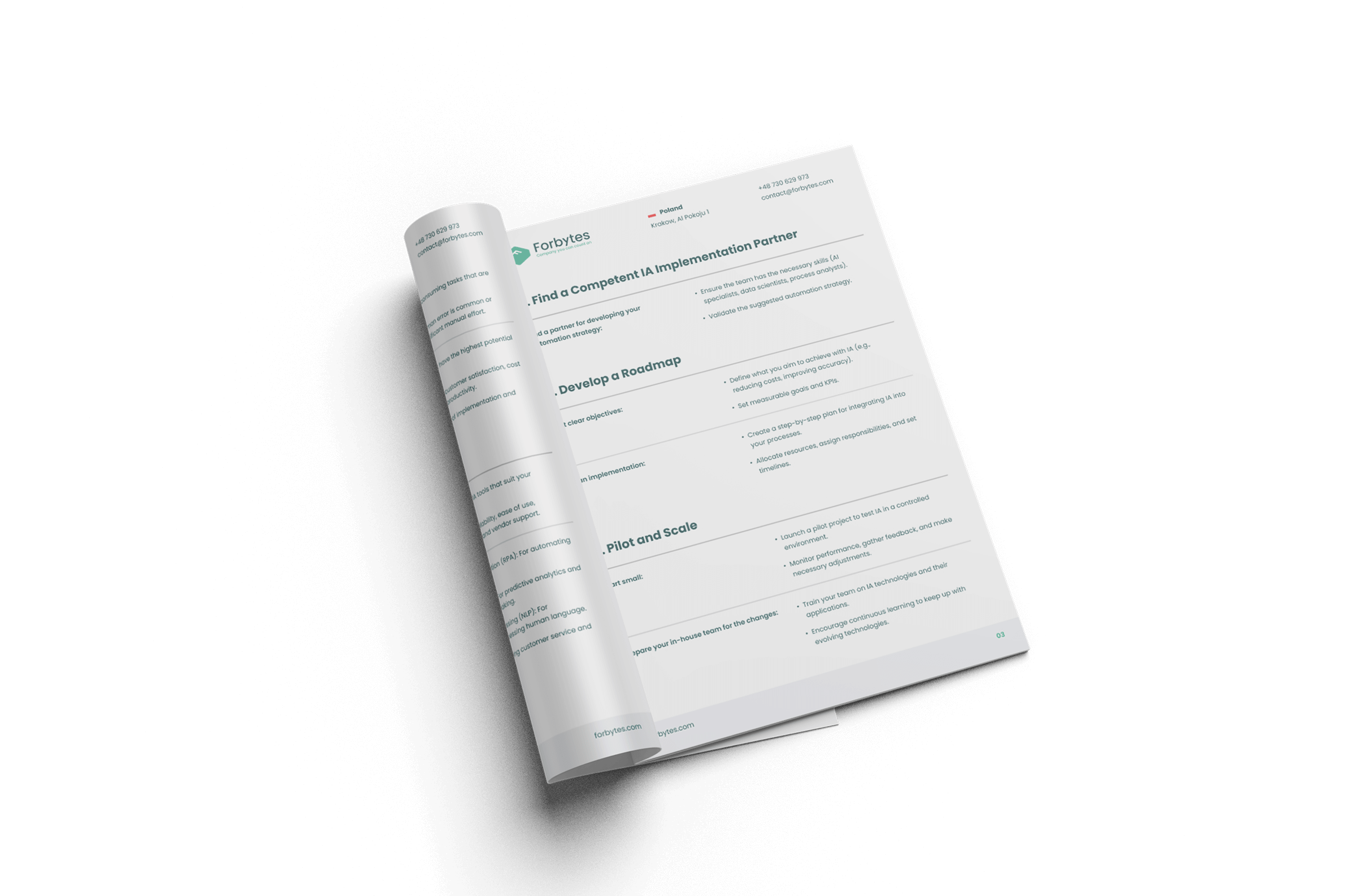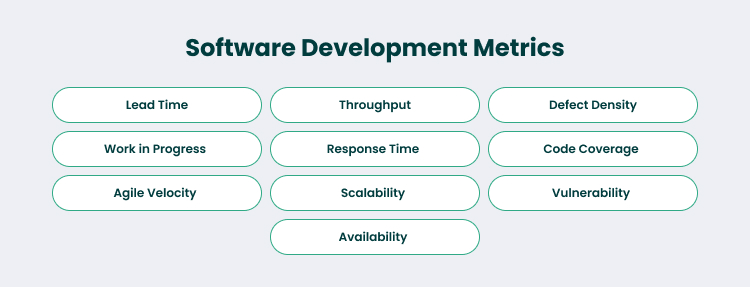Are you struggling to deliver projects on time? Do you find it difficult to maintain code quality? Some of the most pressing challenges in software development include missed deadlines, unclear progress, and quality issues.
You’re not alone – these are common challenges that software development teams face. But imagine if you had a clearer view of your team’s performance, product quality, and overall project health. How much easier would it be to stay on track?
So, how can you tackle these issues? This is where software development metrics come in. By providing measurable data, metrics help you get a clear picture of what’s working and what isn’t, so you can take action before small problems escalate.
For example, metrics like cycle time and velocity give you real-time insight into your team’s progress. So, you can track deadlines more accurately. To improve code quality, tracking metrics such as defect density or code churn can help you spot trouble areas before they become costly. And when it comes to efficiency, productivity metrics allow you to identify bottlenecks, ensuring your team works smarter, not harder.
With the right metrics, these pain points become manageable, setting your team up for success. Ready to dive deeper into how software development metrics can help revolutionize your development process? Let’s explore this further in our article!
What Are Software Development Metrics and Why Do They Matter?
Software metrics are vital for understanding how well your system works. This is a good way to measure the quality and health of your software development process. Plus, they are essential for evaluating both current systems and new projects.
Software development metrics are based on efficiency, reliability, and ease of maintenance. These metrics should be objective, simple to understand, and consistently tracked over time.
By analyzing these engineering metrics, development teams can spot design flaws, find areas for improvement, track progress, and manage project requirements in real-time. They also help teams oversee the development process and keep an eye on their work.
Why do software metrics matter for your business? First, organizations with solid software development metrics report a 60% improvement in customer satisfaction ratings. Second, they can lead to a 20-30% reduction in customer-reported product defects.
So, engineering metrics not only drive business growth but also make customers happier and operations more efficient.
Software development metrics vs. software development KPIs
Software development metrics and Key Performance Indicators (KPIs) both help teams track progress, but they serve different purposes.
Metrics are detailed measures focusing on specific aspects of the development process, like how efficient the code is or how many bugs have been found. Common metrics include code complexity, velocity, or the number of changes made to the codebase.
On the other hand, KPIs look at the bigger picture. They measure how well the development work aligns with business goals, such as getting a product to market quickly or improving customer satisfaction. KPIs help estimate the overall success of a project and whether it meets its objectives.
While software metrics are more about the day-to-day work of developers, KPIs focus on the long-term impact and value of the project. Both are important for keeping a project on track, but they serve different needs.
Want to know how software development metrics can boost your projects? Contact us today to learn more!
Why Do You Need to Track Software Metrics?
The goal of tracking engineering metrics is to make your processes smoother, improve quality, and help your team work better together. By keeping an eye on these metrics, you get a clear picture of how things are going, which helps you spot any issues or bottlenecks early on and fix them before they become bigger problems.
Tracking metrics also helps you manage workloads and resources more efficiently, making sure that tasks are assigned, and deadlines are met. In fact, companies that track and manage metrics can see up to a 20% increase in operational efficiency.
Tracking quality metrics, like defect rates and customer complaints, can also significantly improve your products and services, with reports showing a 30% reduction in defects and a 25% boost in customer satisfaction.
Beyond efficiency, tracking software metrics gives you solid data to make better decisions and set realistic goals that align with your team’s overall objectives. Organizations that make data-driven decisions are 23 times more likely to acquire new customers, 6 times as likely to retain them, and 19 times as likely to be profitable.
But it’s not just about tracking the numbers – it’s important to regularly review and report on them to see how you’re progressing to fine-tune your strategies.
Types of Software Engineering Metrics
IT companies track a range of software engineering metrics to understand the development progress and software quality and estimate user satisfaction. We can divide those we use into three main categories:
Developer productivity
At Forbytes, we prioritize metrics such as lead time, work in progress (WIP), and agile velocity to gain insights into our team’s efficiency and progress. For instance, lead time measures the duration from when a project is proposed to when it’s delivered. If it takes your team two weeks to develop a new feature for a mobile app, that’s the total time from planning to deployment.
You also keep an eye on Work in Progress (WIP), which tells you how many tasks the team is juggling at any given moment. If WIP shows five active tasks, it gives you a good idea of whether the team is handling their workload effectively.
Lastly, by reviewing past sprints, you calculate agile velocity. For example, if your team consistently completes 20 story points each sprint, you can use that to predict how much work they can tackle in future sprints. This insight helps you plan and set realistic goals for upcoming projects.
Software performance
We also pay much attention to performance metrics to assess how well a system functions, focusing on scalability, speed, and availability. Common metrics include throughput (data processed per time unit) and response time (how fast the system reacts).
If you have an online e-commerce platform, tracking key e-commerce performance metrics is essential for smooth operation.
Start with throughput, which measures transactions per second. For instance, if your platform processes 500 transactions during a sale, it shows it can handle many shoppers simultaneously.
Next, monitor response time to see how quickly your site loads. An average response time of 1.5 seconds allows customers to browse and purchase with minimal delays, enhancing their experience.
During peak seasons, assess scalability by checking if the system maintains performance as user numbers grow, like from 1,000 to 10,000 during a flash sale.
Lastly, track availability to ensure your site is accessible. A 99.9% uptime means customers can shop nearly anytime, boosting their confidence in your platform.
By keeping an eye on these metrics, you can ensure your e-commerce site remains efficient and user-friendly, even during busy times.
Defects and security
Teams need to measure defect rates, code coverage, and security vulnerabilities to ensure software quality. Engineering metrics like defect density and technical debt help highlight issues that can be addressed early on, while vulnerability scans ensure the system is secure.
Let’s say a software development team is working on a new app. One important metric they track is defect density, which tells them how many defects there are for every thousand lines of code. If they find a high defect density, it means there are quality issues they need to fix.
They also check code coverage, which shows how much of the code has been tested with automated tests. If only 60% of the code is covered, it means some areas haven’t been tested, increasing the risk of defects. On the security side, the team runs vulnerability scans to find weaknesses in the app. If they discover several serious vulnerabilities, they know they need to address these before launching the software.
By keeping an eye on these development metrics, the team can catch and fix problems early, leading to a better and more secure product.
Looking for support in planning your project and establishing effective KPIs? Reach out to us today, and together we’ll drive your business to new heights.
Best Practices for Tracking Your Metrics in Software Engineering
At Forbytes, we know how to track software metrics to make it faster, more efficient, and more productive. We hope our simple advice helps guide you in the right direction.
Tip 1: Focus on team efficiency, not just individual productivity
When selecting KPIs, prioritize how well the team works together, rather than focusing solely on individual developer performance. Collaboration and overall team efficiency lead to better outcomes in software development.
Tip 2: Quality over quantity
Don’t rely only on software metrics that count things, like the number of commits. While those statistics can be interesting, they don’t always tell the full story. Instead, track KPIs that reflect the quality of your team’s work and how satisfied customers are with the results.
Tip 3: Choose software metrics that reflect critical processes
Start by identifying the key processes that drive your project’s success, such as code quality, testing, and deployment cycles. From there, select engineering metrics that will give you the most meaningful insights into these areas.
Tip 4: Customize engineering metrics for your organization
Avoid copying software metrics from other companies. Every organization is unique, so choose metrics that align with your specific goals and culture to ensure long-term success.
Tip 5: Use KPIs that motivate your team
Choose KPIs that your team understands and believes in. Metrics that feel irrelevant or go unnoticed can quickly lead to disengagement. Make sure everyone feels invested in achieving the KPIs you track.
Tip 6: Start small and move step by step
Don’t overwhelm your team with too many development metrics. Instead, start by tracking just a few KPIs that truly matter to your project. This keeps things focused and highlights real progress without unnecessary distractions.
By following these tips, you’ll be on your way to selecting meaningful software metrics and KPIs that drive your software efficiency and team success.
Getting Started with Forbytes
In conclusion, tracking engineering metrics is essential for ensuring success in software development. We hope that after reading this article, you now recognize the importance of software metrics in evaluating performance, enhancing team productivity, and optimizing project workflows.
Development metrics and KPIs lay a solid foundation for actionable decision-making, enabling you to measure progress from high-level objectives down to individual tasks. To maximize efficiency, it’s important to partner with a development agency that specializes in turning operations into relevant KPIs.
If you’re looking to measure the success of your product or need more insights into effective software development metrics, Forbytes can help. Our expert team is ready to guide you through the process of setting up impactful KPIs and metrics that will optimize your results.
Contact us today for a free consultation to start a collaboration and elevate your team’s progress.












